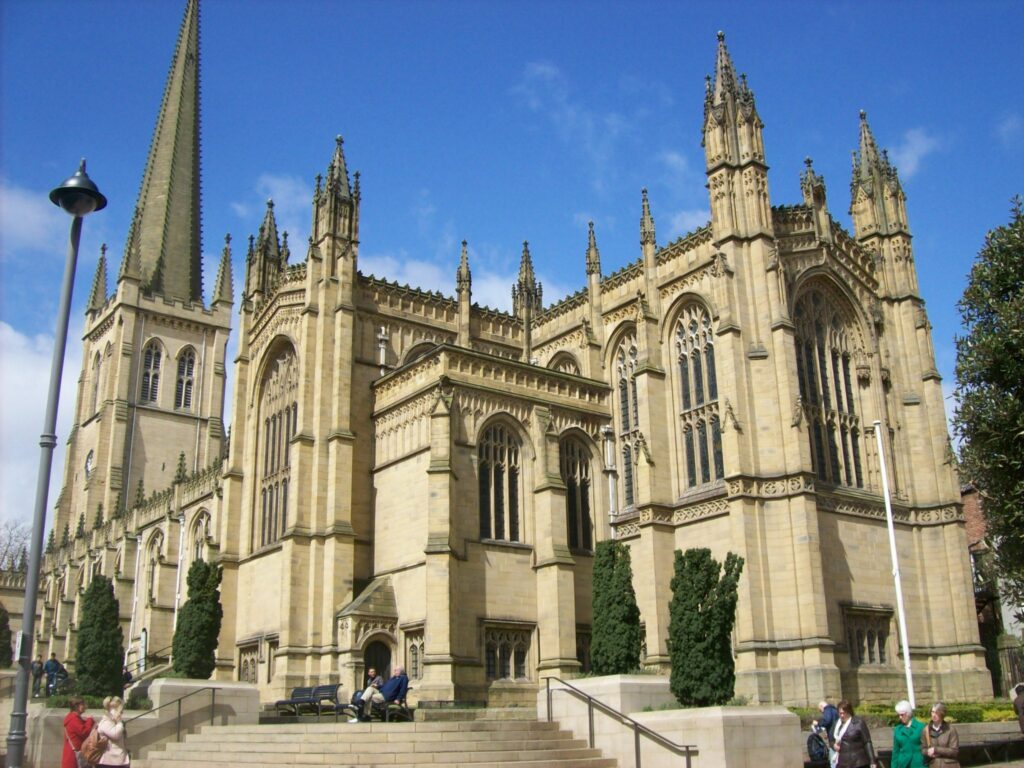Another blue plaque has been spotted in Wakefield in West Yorkshire. This one is outside the cathedral and celebrates the birth of composer Noel Gay (1898-1954).
Noel Gay was a successful British composer of popular music of the 1930s and 40s. Sheridan Morley said that he was ‘the closest Britain ever came to a local Irving Berlin’. His output comprised 45 songs as well as the music for 28 films and 26 London shows.
Born Reginald Moxon Armitage, by the age of just eight he would often deputise for the choirmaster at the cathedral, and became honorary deputy organist at 12. At 15 he obtained a scholarship to the Royal College of Music followed by studies in music at Christ’s College, Cambridge.
Interestingly it was here that his interest in religious music and composition waned to be replaced by a passion for musical comedy. Writing popular songs, he used the stage name Noel Gay. According to Morley the name was derived from a sign he saw on a London bus which read ‘NOEL Coward and Maisie GAY in a new revue’.


Although he wrote under another pseudonym, Stanley Hill, for his more sentimental work, Gay had a real talent for writing catchy, popular melodies in styles ranging from music hall to operetta. An early hit was Clowns in Clover, but his most famous show came in 1937 with Me and My Girl. This gained popularity when the BBC broadcast it live on radio in 1938 with its great showstopper, ‘The Lambeth Walk’ which was even the subject of a leader column in The Times: ‘While dictators rage and statesmen talk, all Europe dances – to ‘The Lambeth Walk’.
As World War II approached he wrote popular songs such as Run, Rabbit, Run alongside songs for revues by The Crazy Gang, and for artists like Gracie Fields, Flanagan and Allen and George Formby,
In 1938 he had created Noel Gay Music which now forms a part of the Noel Gay Organisation which includes divisions for television and theatre and is a significant British showbusiness agency. Today his son, Richard Armitage runs the influential Noel Gay Artists agency.
Written by Nicholas Keyworth
Have you spotted any plaques commemorating British Musicians? Send us a photo and tell us more!

